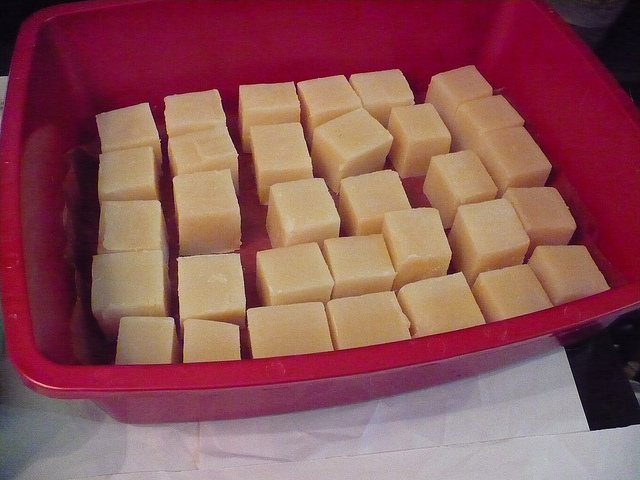Lye is one of the fundamental ingredients of soap making, so it’s important to understand how to use it properly. Photo courtesy of flickr user maoquai.
Soap making is not only a hobby, it can also be an addiction.
You will no doubt be hooked once you start making that first batch of soap (here’s our free suggested recipe).
Whether you choose to make soap for personal use or for holiday gifts, it is always better to be knowledgeable of the general process.
This post outlines the basics of the most popular soap making methods, but please click here to read our full, comprehensive post on the soap making methods available to you, or click here for our comprehensive post on soap making equipment.
The Soap Process
There are several ways to make soap. The method used depends on the products and materials available and the type of desired soap. Whatever it is, one thing is basic:
Soap is made from oil and lye no matter the method used. Once the basic soap is made, it can then be perfumed, colored, filled, shaped and packaged.
Soap Making Methods
1. Cold Process –
currently the most common method used for making homemade soaps today. This process is widely used by home-based soap makers. The neutralization stage takes place during the molding stage.
2. Hot Process –
Hot process soap making is a method of making soap by which you introduce heat to speed the reaction.
Saponification is an exothermic reaction, meaning that it produces heat.
As it happens, applying more heat makes saponification go faster. As a result of speeding saponification by using a hot process, the 6-8 week curing process of cold process is shortened dramatically, down to anywhere between 1 day and 3 weeks depending on your method.
3. Melt and Pour –
The soap base is bought in a large, clear block. The soap is then melted down in a double broiler or in a bowl in the microwave.
Once the soap is melted add the fragrance, color and other agents as desired. Once the soap and additives are mixed completely, pour into the molds.
This short process will produce lovely homemade soaps. As fun and useful as the melt and pour process is, people who use this method are not technically making soap; they are improving plain, already existing, but rather bland soap.
People who actually want to make soap need to use either the hot process or the cold process.
4. Rebatching –
it is a method by which you can take existing soap or soap scraps, melt them down, pour the melted soap into molds and make new soap.
Rebatching is often used to preserve the scent or the healing properties of some essential oils.
Soap Making Equipment
This is a brief overview of the necessary soap making equipment you will need. Make sure you click here for our full, comprehensive post on soap making equipment with more detailed explanations.
o Large stainless steel mixing bowl. This greatly reduces the amount of splatter leaving the bowl during the mixing process
o Heat-resistant container that hold 2 cups to mix Lye and water. Note: Using a large container may result in rapid heat loss and temperatures not reaching their goal
o A container to heat oils. If using the stove, a stainless steel pot will do. If using the microwave, use a microwave-safe container
o Candy or meat thermometer made of glass and stainless steel (having two works best – one for the lye and one for the oil)
o Protective wear: long sleeved shirt, pants, shoes (no bare feet), glasses and rubber gloves. Keep a bottle of vinegar nearby to neutralize lye spills
o Soap molds; plastic, cardboard, or wood (use wax paper to line, see “Soap Molds”)
o Measuring spoons, pot holders or oven mitts, and plastic spatulas
o Accurate digital scale
o Stick blender(optional)
o Towel
Take the next step
Make sure you download our FREE comprehensive beginners guide, ‘How To Make Soap At Home’, by clicking here.
If you are ready to get serious about soap making, we have a special offer on our Soap Making Ebooks range, with a risk free 60 day money back guarantee! Also available for Kindle, iPhone, iPad, Android and all major Ebook reader platforms.
